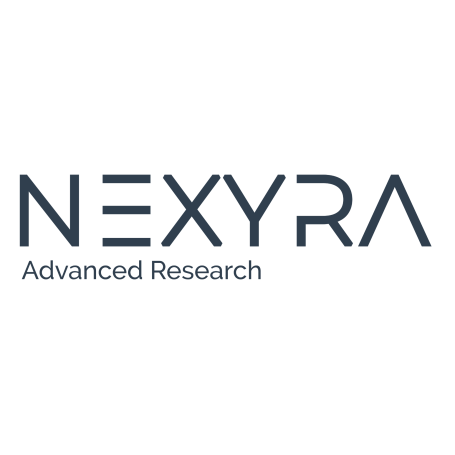Top 10 Deeptech Trends in Omics 2025
Unlocking omics | Powering precision
Bio-digital convergence is transforming medicine, biology, and the biopharmaceutical industry through the integration of disruptive technologies such as omics sciences, artificial intelligence (AI), quantum computing, digital twins, and neurotechnology. Multi-omics analysis (genomics, transcriptomics, proteomics, metabolomics) enables comprehensive characterization of biological systems and, together with AI, facilitates the integration and analysis of large volumes of data to advance precision medicine and treatment personalization.(1,2)
AI, especially in its multimodal form, is enabling the integration of clinical data, images, sensors, and omics, enabling applications in personalized medicine, digital clinical trials, remote monitoring, and the development of digital twins, which are virtual representations of patients for simulation and prediction of therapeutic responses.(3,4) Furthermore, quantum computing is emerging as an emerging technology with the potential to accelerate the processing of complex data in bioinformatics and drug discovery.
The digitalization of genomics and its integration with digital health tools are improving clinical decision-making and care efficiency, although regulatory, ethical, and interoperability challenges remain. (5) Together, these technologies are redefining the biomedical paradigm, enabling more predictive, preventive, personalized, and participatory medicine, and opening new opportunities for innovation in the biopharmaceutical industry. (6, 7).
1. Multimodal AI in Omic Sciences (Omics-AI Fusion)
Fusion of genomics, transcriptomics, proteomics, and metabolomics with generative AI architectures to accelerate biological discovery, drug design, and personalized biomarkers.
Expected impact: Reduction in the clinical validation cycle by 40-60%
2. Quantum Computing for Molecular Biology
Application of qubits and quantum algorithms (VQE, QAOA) in protein structure simulation, molecular interaction prediction, and the dynamics of complex systems.
Expected impact: Overcoming the computational bottleneck in protein and biological materials design.
3. Neuro-AI and Brain-Digital Interfaces
Brain-computer interfaces (BCIs) integrated with adaptive AI for real-time central nervous system modeling. Applications in neurotherapies, neurorehabilitation, and neuroprosthetics.
Expected impact: Neurotechnology market to expand 4x by 2027.
4. Biomolecular Digital Twins
Living digital representations of cells, tissues, and organs, using omics data + molecular dynamics + AI.
Expected impact: Simulated preclinical testing and reduction of animal use.
5. Bioengineering with generative AI
Use of generative models (such as AlphaFold and GANs) for the autonomous design of enzymes, proteins, and functional biomolecules.
Expected impact: Creation of new markets in biomanufacturing.
6. Omics-as-a-Service (OaaS) Platforms
Decentralization of omics analysis through cloud-based analysis, integration, and visualization platforms for emerging clinical and biotech companies.
Expected impact: Democratization of personalized medicine.
7. Computational Systems Biology (SysBio 5.0)
Dynamic modeling of metabolic, epigenetic, and cellular networks using AI for phenotype and therapeutic pathway prediction.
Expected impact: Increased effectiveness in drug target discovery.
8. Smart Nanomedicine with AI-Driven Design
AI-designed therapeutic nanodevices for precise molecular targeting, specific activation, and programmed drug release.
Expected impact: Reduction of systemic side effects by >50%.
9. Bio-Digital Data Infrastructure (BioGrid)
Secure, federated networks for interoperability between hospitals, laboratories, and biobanks using the FAIR standard and blockchain for traceability.
Expected impact: Scalability in multicenter clinical trials.
10. Self-Adaptive Diagnostic Systems (Smart Omic Diagnostics)
Diagnostic tools that automatically update their models through continuous learning based on omics data streams.
Expected Impact: Early and dynamic diagnosis in rare and complex diseases.
These trends are not simply a technological roadmap. They are a new epistemological contract between biology, computing, and health. The medicine of the future will be predictive, preventive, personalized, and participatory. And it will be built on data infrastructures, robust AI platforms, and a systemic integration of the omics sciences.
At Nexyra, we are committed
At Nexyra, we reaffirm our strategic commitment to the research, development, and implementation of these DeepTech omics technologies. Our R&D roadmap and solutions pipeline align with this new bio-digital paradigm, integrating capabilities in AI, omics analysis, biomolecule design, and digital platforms for more precise and transformative medicine.
Contact us to learn how Nexyra can help you integrate these technologies into your clinical, research, or product development processes.
References
- Cong Y, Endo T. A quadruple revolution: Deciphering biological complexity with artificial intelligence, multiomics, precision medicine, and planetary health. OMICS [Internet]. 2024;28(6):257-60. Disponible en: http://dx.doi.org/10.1089/omi.2024.0110
- D’Adamo GL, Widdop JT, Giles EM. The future is now? Clinical and translational aspects of «Omics» technologies. Immunol Cell Biol [Internet]. 2021;99(2):168-76. Disponible en: http://dx.doi.org/10.1111/imcb.12404.
- Singh S, Sarma DK, Verma V, Nagpal R, Kumar M. Unveiling the future of metabolic medicine: omics technologies driving personalized solutions for precision treatment of metabolic disorders. Biochem Biophys Res Commun [Internet]. 2023;682:1-20. Disponible en: http://dx.doi.org/10.1016/j.bbrc.2023.09.064.
- Puniya BL. Artificial-intelligence-driven innovations in mechanistic computational modeling and digital twins for biomedical applications. J Mol Biol [Internet]. 2025;(169181):169181. Disponible en: http://dx.doi.org/10.1016/j.jmb.2025.169181
- Bombard Y, Ginsburg GS, Sturm AC, Zhou AY, Lemke AA. Digital health-enabled genomics: Opportunities and challenges. Am J Hum Genet [Internet]. 2022;109(7):1190-8. Disponible en: http://dx.doi.org/10.1016/j.ajhg.2022.05.001.
- Leite ML, de Loiola Costa LS, Cunha VA, Kreniski V, de Oliveira Braga Filho M, da Cunha NB, et al. Artificial intelligence and the future of life sciences. Drug Discov Today [Internet]. 2021;26(11):2515-26. Disponible en: http://dx.doi.org/10.1016/j.drudis.2021.07.002.
- Wan S, Coveney PV. Introduction to computational biomedicine. Methods Mol Biol [Internet]. 2024;2716:1-13. Disponible en: http://dx.doi.org/10.1007/978-1-0716-3449-3_1
© 2025 Nexyra. All rights reserved.
This content is protected. Reproduction or distribution only with express authorization.
